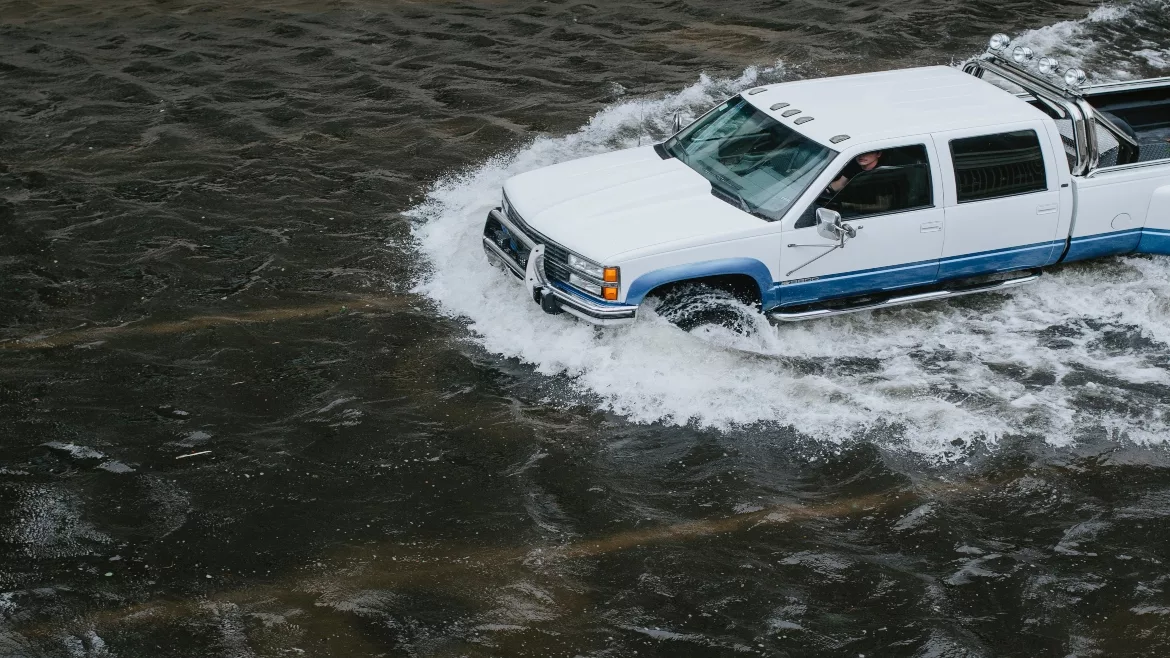How public safety can prepare for severe weather

Photo by Wade Austin Ellis on Unsplash
The U.S. is once again in the midst of a severe weather stretch that will threaten communities across the country. We already have an above-average hurricane season forecasted to produce at least five major storms. Experts also predict that an active wildfire season will scorch much of the Northwest and West due to current drought conditions.
In light of the challenges underway and the weeks ahead, it’s a good time for public safety, emergency management, and law enforcement officials to revisit severe weather plans. Careful planning can save lives and prevent damage to vital infrastructure. It can also improve collaboration between public safety groups, responders, and other organizations.
The challenge, of course, is implementing severe weather solutions that work well for all people in any type of situation. Every natural disaster is unique, as are the communities affected by such events. Fortunately, technology can help reduce complexity and make life easier for those responsible for community safety.
To that end, here are three ways public safety officials and law enforcement can leverage technology to support their communities. These best practices are actionable today and could prove their worth in the coming months.
1. Communicate clearly before and during severe weather events
Clear and effective communication is essential when dealing with severe weather and natural disasters. People should know what is expected of them, where they can find critical resources, and how they can protect themselves during an event.
One of the best things public safety leaders can do is create response plans well in advance and communicate them clearly to community members. This means publicizing key communications in an accessible digital location (i.e., a website or mobile app) and reaching out to people proactively. Depending on the severity of the weather, this can happen through email, SMS messaging, automated phone calls, digital signage — whatever it takes to maximize visibility.
Once a severe weather event begins, public safety teams need to inform people about what’s happening. Communication should be concise and consistent not to overwhelm community members but should also consider the modes of communication.
Less critical updates may be provided via social media or websites, while clear and actionable safety threats may be more effectively communicated via text or automated calls. This requires investing in robust technology that allows for multi-channel messaging at scale. One or two modes of outreach aren’t enough to share crucial information and keep people safe consistently.
2. Leverage technology to provide extra support to at-risk populations
Every community has at-risk citizens who need extra assistance during severe weather events. Public safety officials and law enforcement must account for these individuals when they develop their natural disaster response plans. One way to do this is through opt-in safety profile systems that store important details about people and their needs.
First and foremost, safety profile systems should include basic contact information, like addresses, phone numbers and nearby family members. They should also include background context that would be relevant in an emergency, like whether someone has a physical or mental disability. This information can go a long way towards protecting community members and those who serve them in emergencies.
Moreover, these safety systems can help officials tailor messages to various population segments. More advanced safety profile systems allow users to apply tags that group people according to specific characteristics, geographic locations, and other useful factors.
Safety profile systems make this custom outreach easier and empower public safety groups to care for their most at-risk community members.
3. Collaborate with other community groups
Public safety officials and law enforcement need support from all sides to protect community members. Even with the strategies mentioned above, there is always room for more engagement and outreach, particularly in large communities.
Public safety teams should be able to coordinate efforts with local businesses, nonprofits, government agencies, and other organizations that people rely on for information or resources. The hard part is ensuring everyone is aligned on who is responsible for what well in advance.
When roles are unclear, messaging can get confusing, and details can fall through the cracks. That’s why having a central platform for task assignments, resource management, collaboration, and communication is important.
Communities need a comprehensive ecosystem through which they can develop and execute natural disaster responses in tandem with other stakeholders. This ecosystem should facilitate collaboration and allow for strategically robust emergency weather responses across public and private stakeholder groups.
The good news is that modern emergency management solutions can provide this ecosystem, along with the community engagement and multi-channel communication capabilities highlighted here. Public safety officials must find the right solution for their communities. And taking this step now, when severe weather conditions are looming, is crucial.
This article originally ran in Security, a twice-monthly security-focused eNewsletter for security end users, brought to you by Security magazine. Subscribe here.
Looking for a reprint of this article?
From high-res PDFs to custom plaques, order your copy today!







